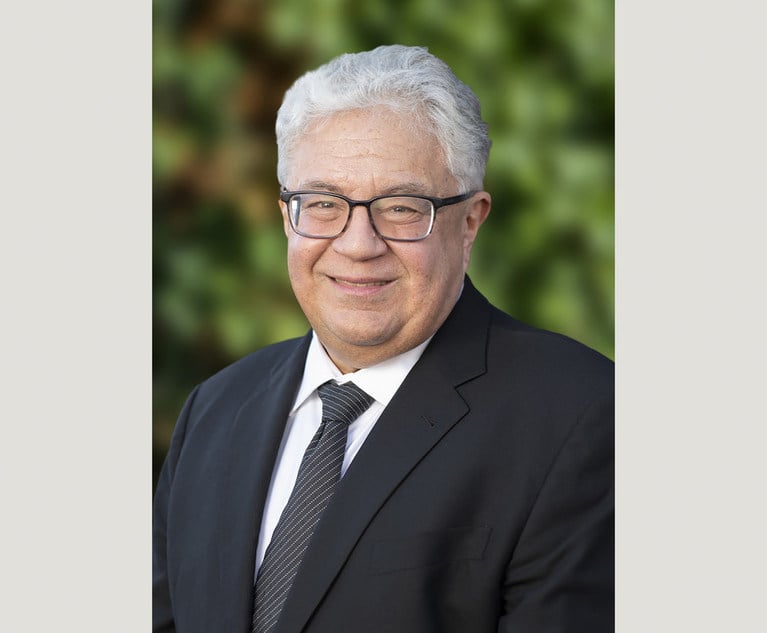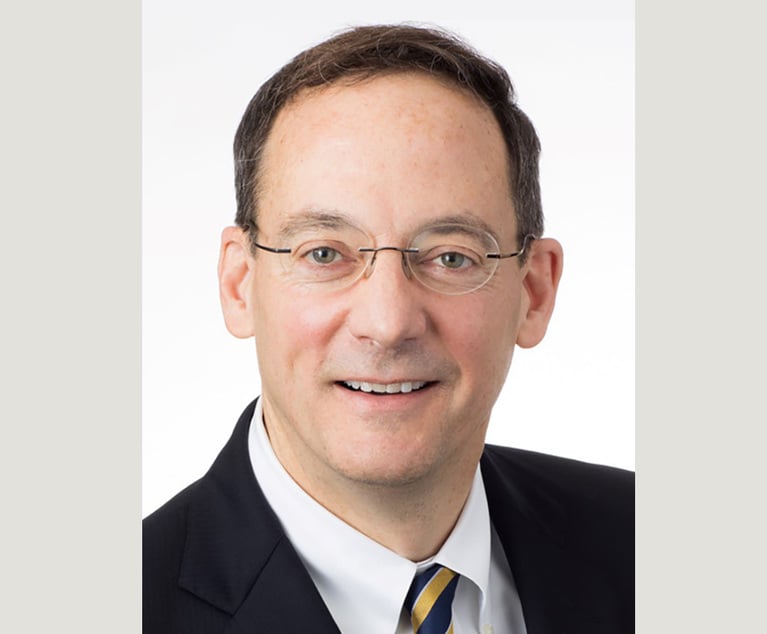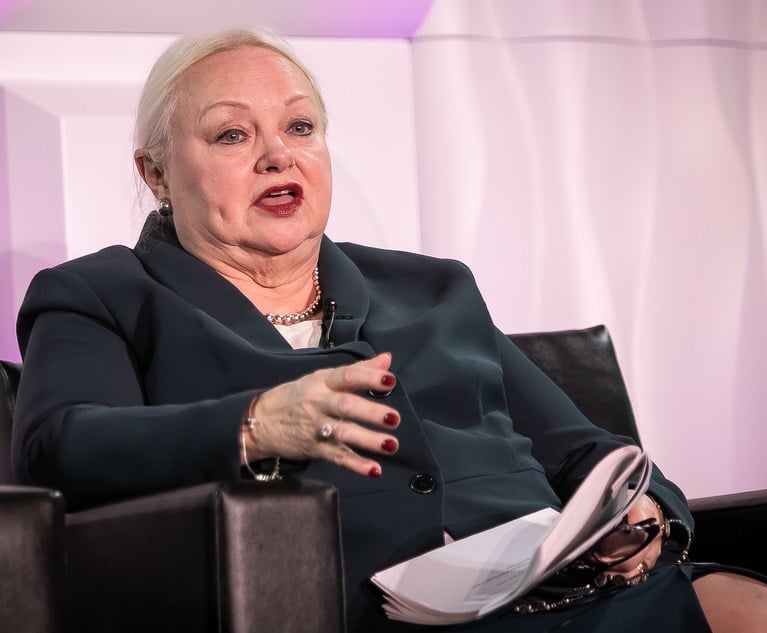 Vasilios J. Kalogredis, with Lamb McErlane. Courtesy photo.
Vasilios J. Kalogredis, with Lamb McErlane. Courtesy photo. OIG Issues Fraud Alert for Practitioners Working With Telehealth Companies
Dozens of investigations conducted by OIG revealed various fraud schemes utilized by such telemedicine companies.
October 31, 2022 at 11:58 AM
7 minute read
On July 20, the Office of Inspector General (OIG) released a special fraud alert to warn and encourage physicians as well as non-physician practitioners to exercise heightened caution when entering into arrangements with "purported telemedicine companies." Dozens of investigations conducted by OIG revealed various fraud schemes utilized by such telemedicine companies. These inappropriate schemes were targeted at increasing the acceptance and use of telemedicine by paying kickbacks to medical professionals to generate orders and prescriptions for medically unnecessary durable medical equipment, genetic testing, wound care items, or prescription medications, which can result in submissions of fraudulent claims to Medicare, Medicaid and other federal health care programs. According to the U.S. Department of Justice (DOJ), Medicare fraud costs U.S. taxpayers billions of dollars every year.
In 2016 the global telemedicine market was valued at approximately $25 billion. It is predicted that by 2025 that number will reach $113 billion. Although the use of telemedicine services in the United States was on a steady climb even before the COVID-19 pandemic, it was underused and understudied. The all-around acceptance of telehealth was substantially low, considering integration and logistics issues. Prior to the spread of the coronavirus disease the services covered by federal health care programs through telemedicine were limited. In March 2020 the Centers of Medicare and Medicaid (CMS) decided to relax telemedicine rules and expand telehealth in response to the pandemic after a Public Health Emergency (PHE) was declared. Consequently, Medicare now covers many telemedicine visits, virtual check-ins, telephone visits and e-visits. Additionally, reimbursement for telehealth services, including audio only, has been the same as if the service was furnished in person. Other relaxed conditions were introduced such as no preexisting relationship requirement between the patient and the practitioner, as well as ability to conduct the virtual contact from home using expanded approved platforms like Zoom, FaceTime and Skype.
This content has been archived. It is available through our partners, LexisNexis® and Bloomberg Law.
To view this content, please continue to their sites.
Not a Lexis Subscriber?
Subscribe Now
Not a Bloomberg Law Subscriber?
Subscribe Now
NOT FOR REPRINT
© 2025 ALM Global, LLC, All Rights Reserved. Request academic re-use from www.copyright.com. All other uses, submit a request to [email protected]. For more information visit Asset & Logo Licensing.
You Might Like
View All

Longtime Reed Smith Health Care Partner Opts for Solo Practice Over Retirement
3 minute read
Hospital Must Provide Pre-Complaint Discovery in Privacy Breach Case, Pa. Judge Rules
4 minute read
Judge Approves $25M Medical Monitoring Settlement Over Philips CPAP Devices
3 minute readLaw Firms Mentioned
Trending Stories
- 1Learning From Experience: The Best and Worst of Years Past
- 2Treasury GC Returns to Davis Polk to Co-Chair White-Collar Defense and Investigations Practice
- 3Decision of the Day: JFK to Paris Stowaway's Bail Revocation Explained
- 4Doug Emhoff, Husband of Former VP Harris, Lands at Willkie
- 5LexisNexis Announces Public Availability of Personalized AI Assistant Protégé
Who Got The Work
J. Brugh Lower of Gibbons has entered an appearance for industrial equipment supplier Devco Corporation in a pending trademark infringement lawsuit. The suit, accusing the defendant of selling knock-off Graco products, was filed Dec. 18 in New Jersey District Court by Rivkin Radler on behalf of Graco Inc. and Graco Minnesota. The case, assigned to U.S. District Judge Zahid N. Quraishi, is 3:24-cv-11294, Graco Inc. et al v. Devco Corporation.
Who Got The Work
Rebecca Maller-Stein and Kent A. Yalowitz of Arnold & Porter Kaye Scholer have entered their appearances for Hanaco Venture Capital and its executives, Lior Prosor and David Frankel, in a pending securities lawsuit. The action, filed on Dec. 24 in New York Southern District Court by Zell, Aron & Co. on behalf of Goldeneye Advisors, accuses the defendants of negligently and fraudulently managing the plaintiff's $1 million investment. The case, assigned to U.S. District Judge Vernon S. Broderick, is 1:24-cv-09918, Goldeneye Advisors, LLC v. Hanaco Venture Capital, Ltd. et al.
Who Got The Work
Attorneys from A&O Shearman has stepped in as defense counsel for Toronto-Dominion Bank and other defendants in a pending securities class action. The suit, filed Dec. 11 in New York Southern District Court by Bleichmar Fonti & Auld, accuses the defendants of concealing the bank's 'pervasive' deficiencies in regards to its compliance with the Bank Secrecy Act and the quality of its anti-money laundering controls. The case, assigned to U.S. District Judge Arun Subramanian, is 1:24-cv-09445, Gonzalez v. The Toronto-Dominion Bank et al.
Who Got The Work
Crown Castle International, a Pennsylvania company providing shared communications infrastructure, has turned to Luke D. Wolf of Gordon Rees Scully Mansukhani to fend off a pending breach-of-contract lawsuit. The court action, filed Nov. 25 in Michigan Eastern District Court by Hooper Hathaway PC on behalf of The Town Residences LLC, accuses Crown Castle of failing to transfer approximately $30,000 in utility payments from T-Mobile in breach of a roof-top lease and assignment agreement. The case, assigned to U.S. District Judge Susan K. Declercq, is 2:24-cv-13131, The Town Residences LLC v. T-Mobile US, Inc. et al.
Who Got The Work
Wilfred P. Coronato and Daniel M. Schwartz of McCarter & English have stepped in as defense counsel to Electrolux Home Products Inc. in a pending product liability lawsuit. The court action, filed Nov. 26 in New York Eastern District Court by Poulos Lopiccolo PC and Nagel Rice LLP on behalf of David Stern, alleges that the defendant's refrigerators’ drawers and shelving repeatedly break and fall apart within months after purchase. The case, assigned to U.S. District Judge Joan M. Azrack, is 2:24-cv-08204, Stern v. Electrolux Home Products, Inc.
Featured Firms
Law Offices of Gary Martin Hays & Associates, P.C.
(470) 294-1674
Law Offices of Mark E. Salomone
(857) 444-6468
Smith & Hassler
(713) 739-1250





